Apple Vision Pro won't get challenged by CES AR & VR hardware
CES 2024 is the last major chance for producers of AR and VR headsets to make a splash before the Apple Vision Pro is released. Here's what Apple's rivals unveiled in Vegas.
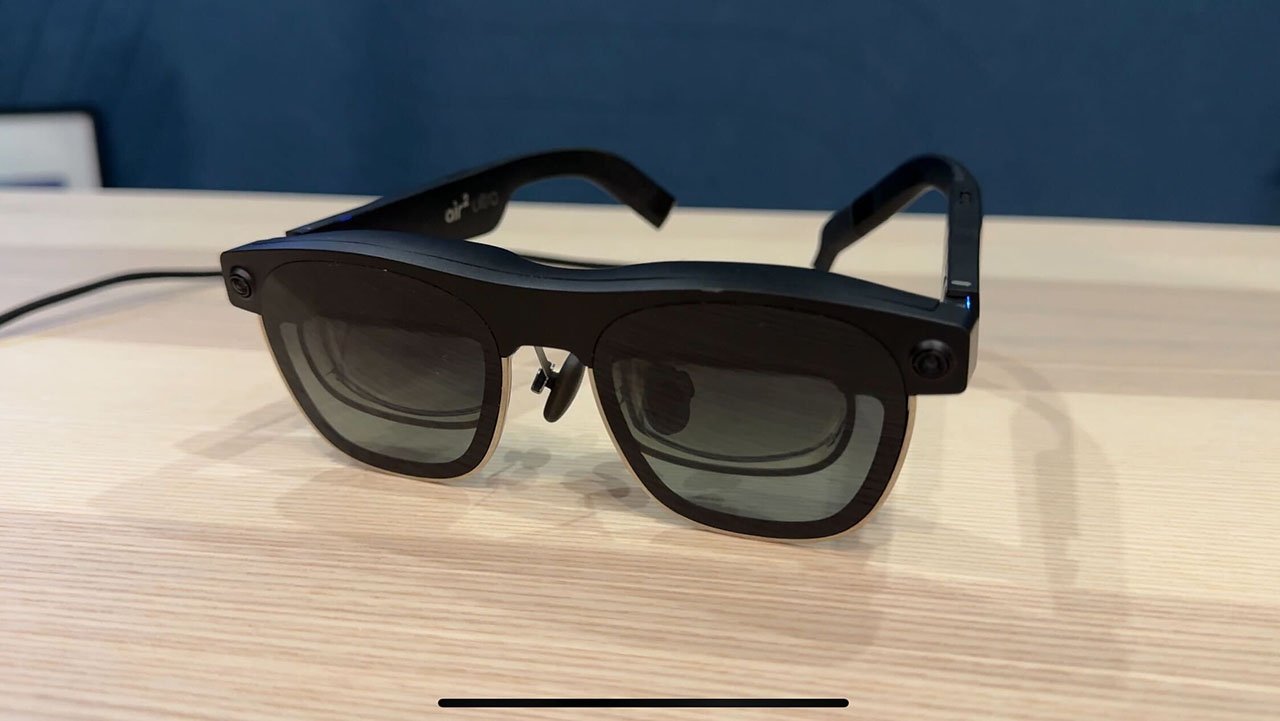
Xreal Air 2 Ultra glasses at CES 2024
The Apple Vision Pro will be released in the United States on February 2, in a move that could make a major impact on the virtual reality and mixed reality headset market. With Apple finally reaching out into the headset industry, this gives other manufacturers only a few more weeks to impress the public with their own devices.
At CES 2024, a number of companies are doing just that, using the trade show to hawk new head-mounted displays, to try and earn customers before Apple's heavyweight comes into play.
What follows is a roundup of headsets, smart glasses, and associated technologies that surfaced at CES for 2024.
Sony
Already a headset maker for its PlayStation 5, Sony announced an intention to create a Spatial Content Creation System, in partnership with Siemens. While it doesn't have a name yet, the headset is billed as a "high-quality XR head-mounted display and controllers dedicated to interaction with 3D objects."
A standalone headset, it will use 1.3-inch 4K OLED microdisplays, and will allow users to view their environment via a see-through function, thanks to six external cameras and sensors. A ring controller will be used for object manipulation, while the pointing controller is intended for precision work.
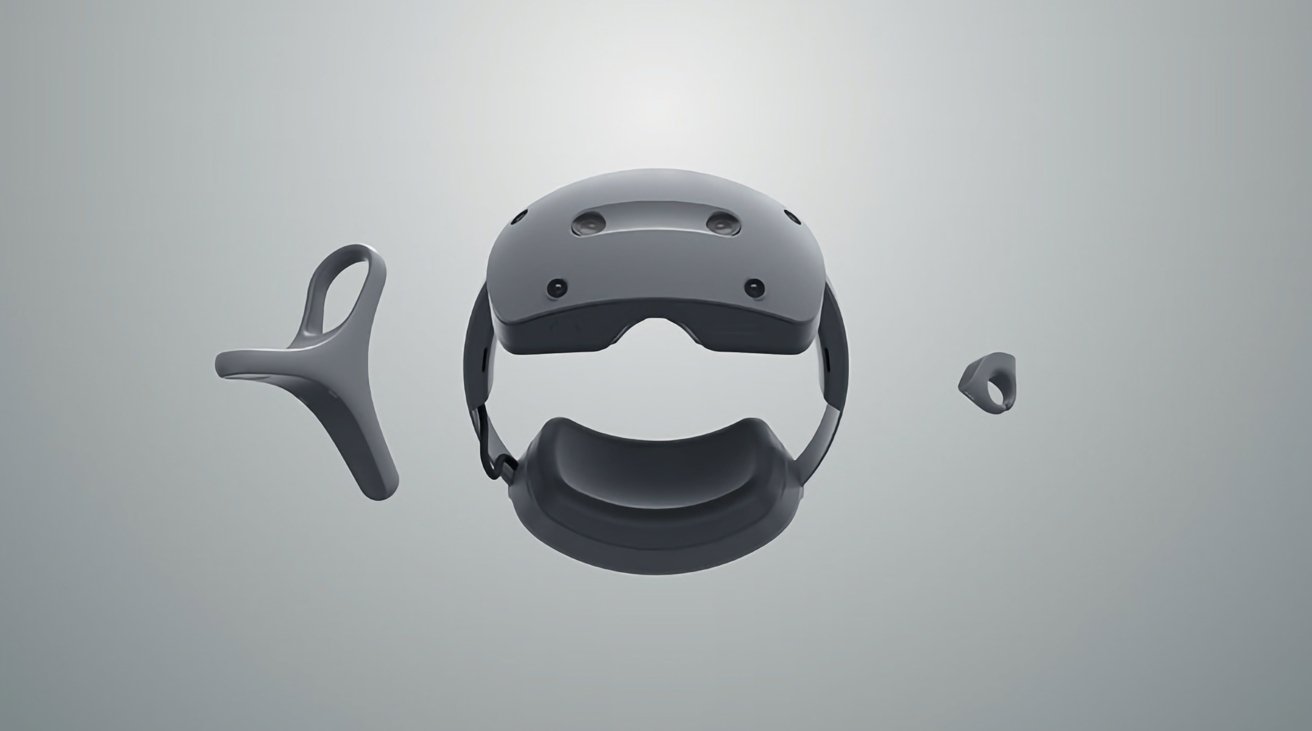
Sony's unnamed mixed-reality headset for content creation.
It will run on Qualcomm's Snapdragon XR2+ Gen 2 Platform, combined with Sony's proprietary rendering technology to handle real-time realistic rendering of 3D objects and the facial expressions of human characters.
Unlike its PlayStation VR headset, this new version is meant for content production, including creating and modifying 3D models in a virtual or mixed-reality environment.
Sony says it wants to bring out the unnamed headset sometime in 2024.
Asus AirVision M1
The Asus AirVision M1 wearable display is not strictly a VR or mixed-reality headset, but really should come under the banner of smart glasses. They are glasses you can wear on your head, and they do have displays, but it's more for producing virtual screens than for 3D content.
Consisting of a micro OLED display with a 1080p resolution for each eye, the AirVision M1 allows the user to see their local environment as well as a screen right in front of their eyes. That screen can also be bright at up to 1,100 nits, with it also having 95% coverage of the DCI-P3 color gamut.
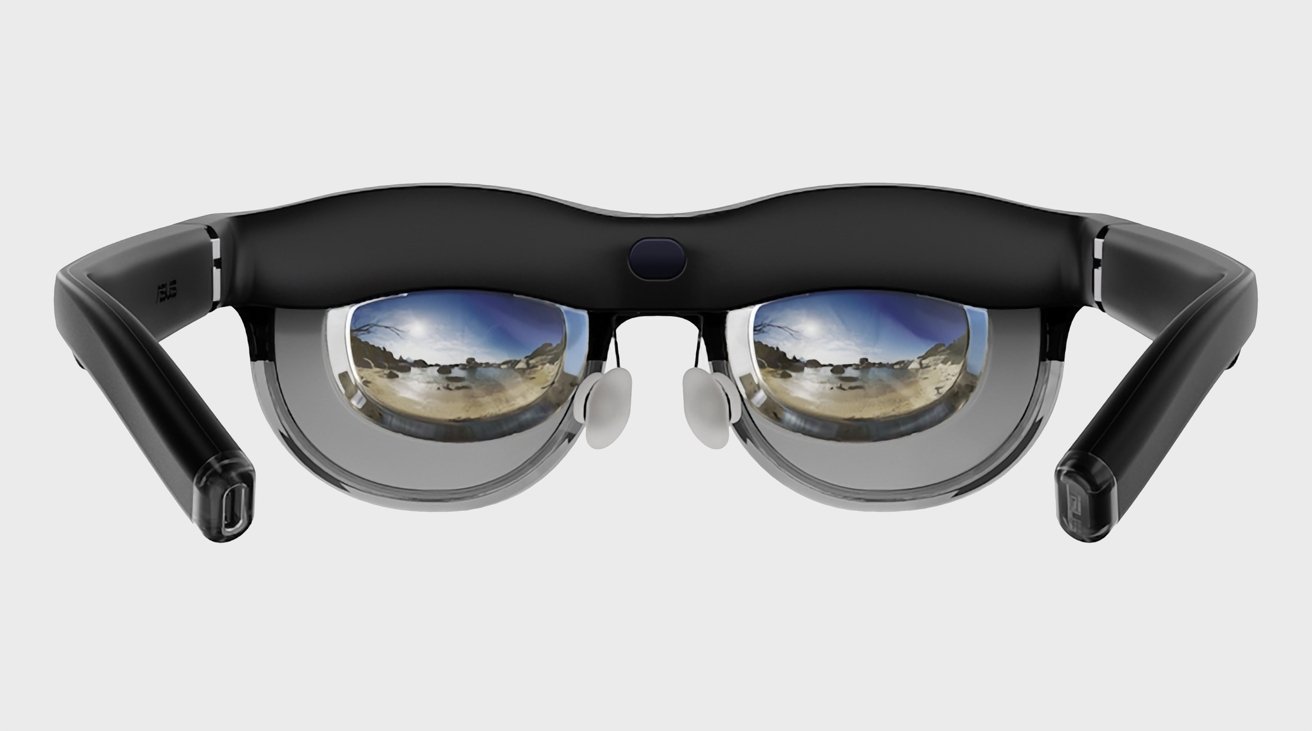
Asus AirVision M1
When used, there's a vertical field of view of 57 degrees, said to be higher than the 55 degrees of natural vertical viewing, and the 40 degrees of most AR glasses.
Instead of a single display, users can set up multiple virtual screens around them, and with three degrees of freedom, they can be viewed relative to the location of the source device. That local device is connected to a host via a USB Type-C connection, with a port hidden in the frame.
On the side of the frame is a multi-function touchpad, which can control content playback or for users to switch between displays. A 3D viewing mode is also available for content, while noise-canceling microphones and speakers are included for remote conferencing.
Pricing and availability hasn't been confirmed by Asus so far.
Xreal Air 2 Ultra
Building upon the success of the original Air AR glasses, Xreal used CES to show off its second-generation models. After launching the Air 2 and Air 2 Pro in December, the main draw at CES was the introduction of another model, the Xreal Air 2 Ultra.
A pair of AR glasses made from titanium, the Ultra version offers more than the Air 2 in a number of ways, with the company heavily going down the spatial computing route with the release.
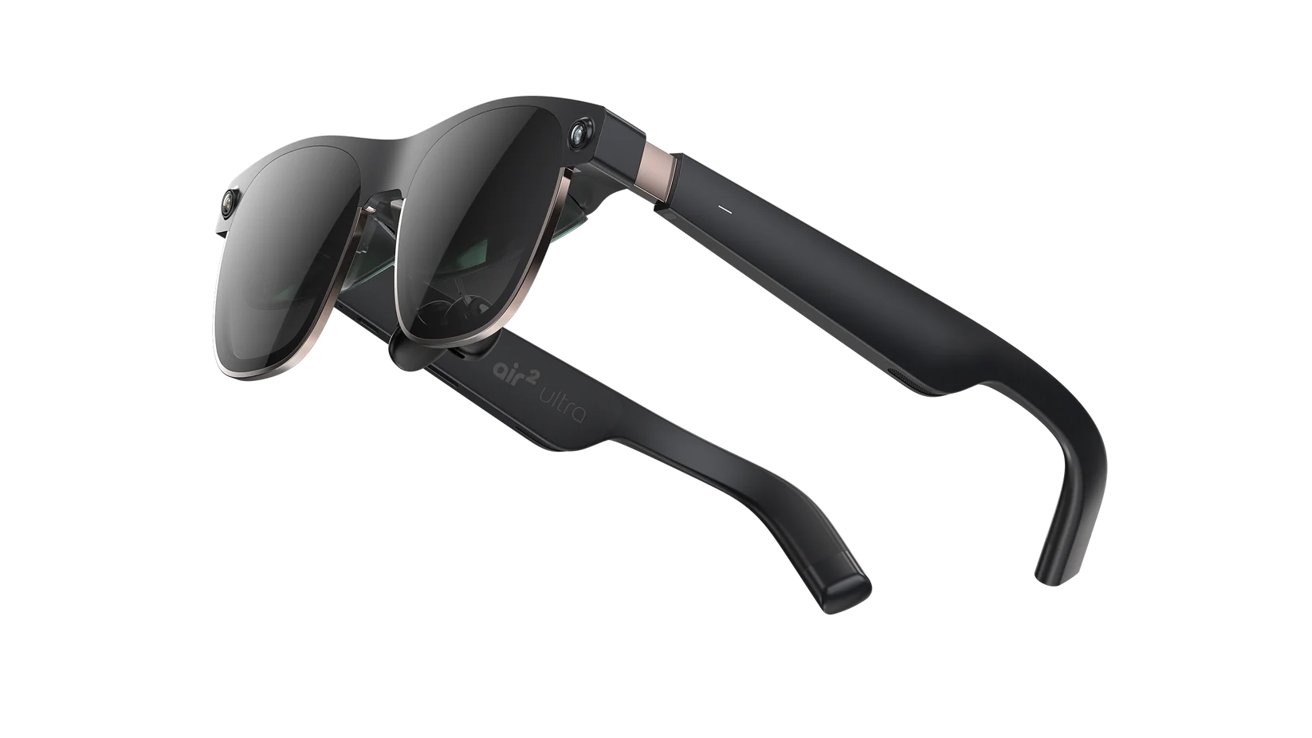
Xreal Air 2 Ultra
The glasses offer full positional tracking with six degrees of freedom, thanks in part to a 3D camera located on each side of the device for mapping the environment. The cameras are also used for features such as hand tracking, allowing for gesture recognition.
Each eye uses a Sony micro OLED panel with a 1080p resolution and a 120Hz refresh rate, though that dips to 90Hz when in 3D mode. Offering 500 nits of brightness, 250 nits in 3D mode, they have a 52-degree field of view, and the glasses also switch between three dimming levels to assist with immersion.
Onboard directional audio helps increase privacy while in use, with two microphones also built in.
At first, the spatial computing elements will work with the Samsung S22 and S23, as well as an "Xreal custom computing unit" that's in development. Connecting over USB-C to an iPhone or Mac, it can be used as a video output, and there's also beta support for Nebula for Mac.
Intended for developers rather than the general public, the Xreal Air 2 Ultra are priced at $699, with pre-orders open now for shipment by the end of March.
Qualcomm's new AR/VR chipset
The launch of the Snapdragon XR2 Gen 2 platform was Qualcomm's main play in the AR and VR headset field for CES 2024. With the launch of a new single chip architecture, Qualcomm believes it can power new hardware that improves MR and VR experiences.
Based on the XR2 Gen 2, the Plus version offers a 15% higher GPU frequency and 20% higher CPU frequency. This enables the chip to support resolutions of up to 4.3K per eye, with supporting hardware.
The chipset is also said to be eight times better at AI performance compared to the Snapdragon XR2 Gen 1.
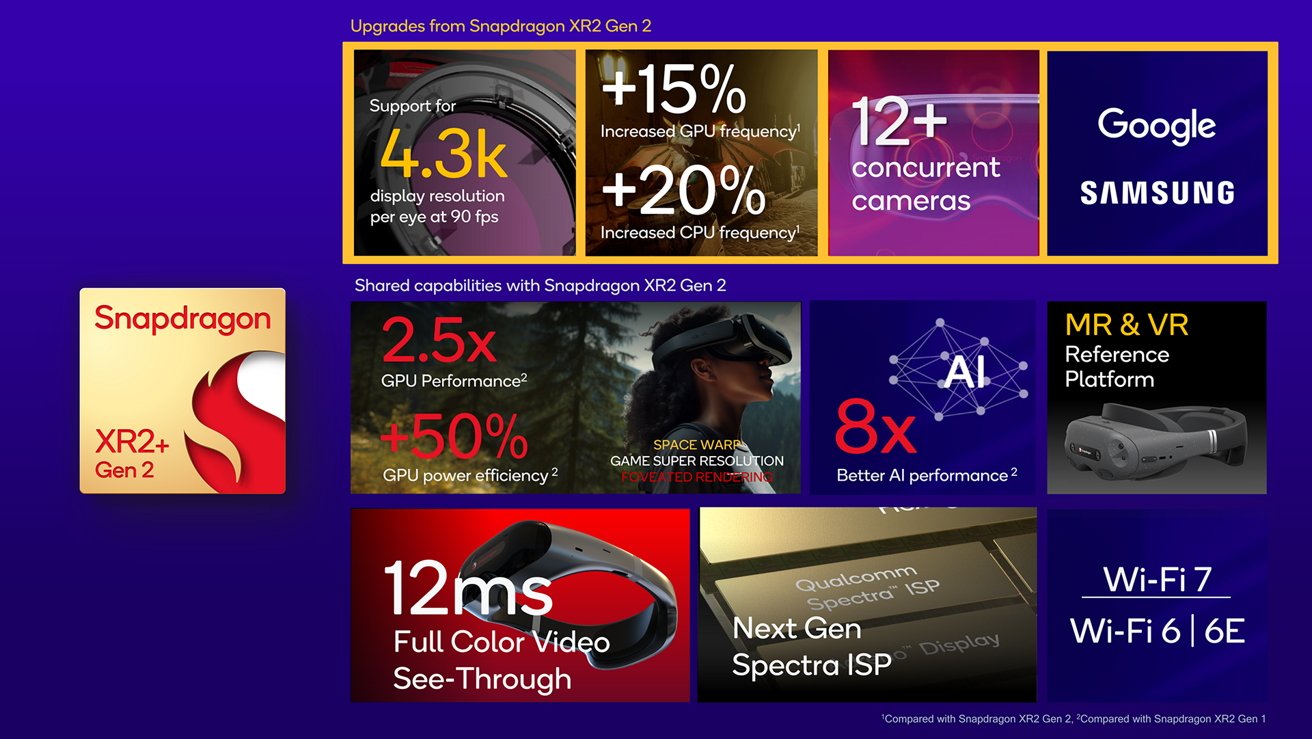
Qualcomm Snapdragon XR2+ Gen 2 infographic
As well as improving what users can see, the Qualcomm chip update will also support 12 or more concurrent cameras, allowing it to handle a lot more data about the user's motion and environment.
At the same time, Qualcomm announced it is working with Samsung and Google to "provide leading XR experiences by utilizing Snapdragon XR2+ Gen 2." This translates to Samsung and Google making hardware, presumably their own headsets, using the chip.
Qualcomm also made its own VR and MR reference design with Goertek, using Tobii eye-tracking technology.
No real issues for Apple Vision Pro
While CES 2024 could've introduced a new product that could've derailed, or at least given Apple something to worry about, there ultimately wasn't any real sudden competition in the headset field.
For a start, none of the elements highlighted above are in the same category as the Apple Vision Pro.
Sony's headset announcement is arguably the closest to Apple's headset in terms of specification and capability, except it's aimed more at developer creation than at consumption by the general public.
Meanwhile, Xreal's offering and other similar smartglasses are less like Apple's mixed-reality headset, which takes total control over a user's view, and fits in closer to the AR overlay style of Microsoft's HoloLens.
Even Qualcomm's chip introduction doesn't really do much to harm Apple's chances, since it would be used in future hardware releases that are months away from being realized by vendors. Even talk about Qualcomm's reference design and its work with Samsung and Google aren't impactful, as the former's not meant for public sale, and the latter two haven't been shown off aside from a confirmation they're on the way.
Apple certainly could find some stiff competition for the Apple Vision Pro surfacing in the coming months. It's just not at CES right now.
Read on AppleInsider

Comments
The software/hardware integration, chip performance and capability is where they will fail. Android (Oracle) OS is a hollow shell beyond smartphones. Ever wonder why it hasn't advanced beyond phones.
Android is also used in Tablets, Smartwatches / Wearables, Smart TVs, Automotive, Internet of Things (IoT), amongst other more specialist uses.
In the past, I've used shades that have clip-on prescription lens - they clip on in-between the shades and your eyes similar to what you see in the AirMotion - and that wasn't a pleasant experience. Also have done the prescription glasses with clip-on shades, which were not that pleasant either. I just buy separate prescription sunglasses for driving and transition lens glasses for normal usage now.
And, Apple is indeed prototyping smart glasses. The rumors have been going on for a while. They aren't happy with what they have and aren't shipping until what they want is achievable.
Also, curious how mobile the AirMotion and Xreal are? The frames will need power, and I wonder how long a phone or compute unit lasts if it is powering them.
While I can't prove this, I know it's true that if there was no Apple Vision Pro announced in 2023 for a release this year, there would be far fewer VR/AR options at CES right now trying to ride in Apple's wake.
You surely disagree, so tell me how a complete VR experience in the Apple Vision Pro would even be possible with very open designs of the AR-only concepts from Xreal and Asus? Can you show me a VR headset that sits like a pair of glasses? I'd love to see it, but I clearly don't the vision you do, so, please, help me out.
Outside of the "concept" Apple should've chosen for their VR?AR/XR headset, how would the specs be put into the Xreal or Asus device. We know it needs to be as close to the displays as possible so that you don't notice lag, and I con't think we're within even a decade to getting a TB cable version that will be able to offload that to some side mounted device along with the battery.
One thing I can see happening down the road after the Pro model has been established as a winner and Apple Vision (the non-Pro model) comes out as a lower-cost option for the masses, is Apple potentially then coming out with an Apple Specs AR-only system that is more inline with the AR concepts you were touting as superior.
beadsets: take over your life, hurt to use after a little while (some reports are at the 20-30 minute mark), don’t let you see the real world - you can only get a representation of it via camera feed. I the VP case, it overtakes your eyes and ears so that your natural senses aren’t picking up the world around them, but picking up what apple says is the world around you. The vp requires an enormous amount of battery to do these h desireable things, and wastes power and tech/expense with an outside screen to show people a pretend face.
It is what it is. But it won’t be what it was truly meant to be or realize it’s mass market useful potential until it’s in a form that is compatible with normal daily life. Until then, it’s destined to be a niche or “hobby” product. It may be more successful than all other headsets. But that’s not saying much now is it.
I don't know how to quantify this so I will clearly phrase it as a feeling: I feel like there was a lot more doubt about the success and utility of the iPad when it was introduced in 2010. That was a product whose purpose I saw right away even though I knew I would always primary be a Mac notebook user when stationary and a smartphone user when mobile. I could see right away that an OS that was not macOS, but iOS with a UI designed around the form factor was going to be the truly great personal, everyday computer for both many that are technically savvy but for a great many more that aren't. It finally helped bring a much older generation into the computing world with much more joy than the old PC that would get used when it just had to be done on a bigger display. Remember the 1990s computer nook in new homes?
I still don't know what AVP means for me and until I do I won't get one, but I am excited to see where AVP takes the market; and unlike certain others, I am not expecting everyone buy Apple to be leading the market now Apple has thrown its hat visor into the ring.
The issue is that there just a lot of room left. You need some clearance so that the corrective lens doesn’t interfere with the projection on to the mirror. And you need some distance between it and your eyeballs.
https://www.digitaltrends.com/computing/ces-wasnt-ready-for-vision-pro/
I don't know if it is being worn correctly, but you can see the nose-pads are resting right on the nose, and it's sitting pretty far away from the face. I've worn glasses for more than 30 years, and having the weight of a pair of smart glasses sitting on the bridge of your nose may be a worse experience than goggles on your forehead and around your eyes.
You also never, ever change the as-shipped shape of the nose-pad wire mounts. Never. Once you change it, you can never get it back to its as-shipped shape. You can never bend them to get them perfect. I only wear plastic frames with the built-in nose-pads now.
So, smartglasses really have to get down to certain weight to be worn for a long time, if the support is the bridge of the nose.
The digitaltrends article just said the same thing AI said, which is no surprise. Companies really can't have an answer to Apple's Vision Pro until the Fall maybe. It is really dependent on how cheap those 4K+ microOLEDs can get over the next year. If rumors are correct, the BOM on the microOLEDs themselves is higher than the MSRP of entire headsets and glasses.